Search Result
Results for "
vasculature
" in MedChemExpress (MCE) Product Catalog:
6
Biochemical Assay Reagents
| Cat. No. |
Product Name |
Target |
Research Areas |
Chemical Structure |
-
- HY-118689
-
|
|
Potassium Channel
|
Cardiovascular Disease
Neurological Disease
Inflammation/Immunology
|
|
RA-2 is a negative-gating modulator of KCa2/3 channels with an IC50 of 17 nM. RA-2 inhibits bradykinin-induced endothelium-derived hyperpolarization (EDH)-type relaxation in U46619-precontracted rings. RA-2 can help to define the physiologic and pathomechanistic roles of KCa2/3 in the vasculature, central nervous system, and during inflammation .
|
-
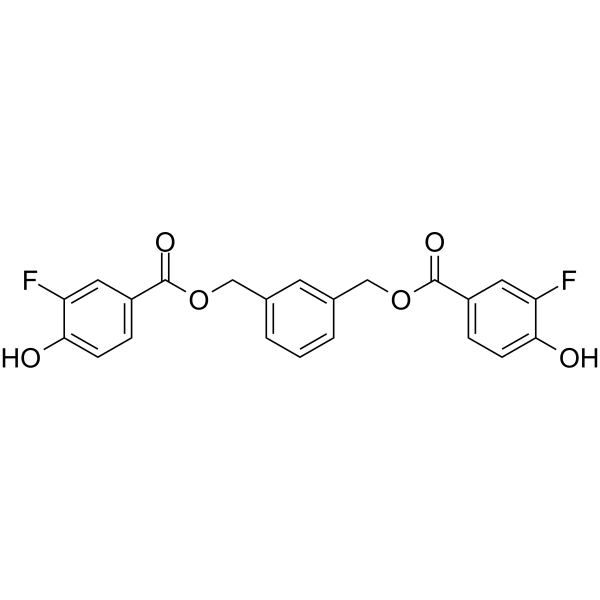
-
- HY-147712
-
|
|
PKC
|
Inflammation/Immunology
|
|
PKC-IN-4 (compound 7l) is a potent and orally active aPKC inhibitor with an IC50 of 0.52 µM. PKC-IN-4 inhibits TNF-α induced NF-κB activity in vitro. PKC-IN-4 blocks VEGF- and TNFα-induced permeability across the retinal vasculature .
|
-
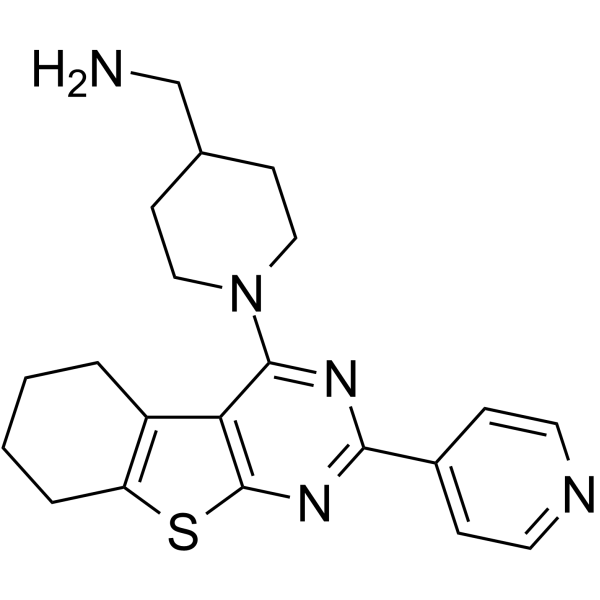
-
- HY-B0813
-
|
UT-15C
|
Prostaglandin Receptor
|
Endocrinology
|
|
Treprostinil (UT-15C) diethanolamine is a potent EP2, DP1 and IP agonist with Ki values of 3.6, 4.4, 32.1, 212, 826, 2505 and 4680 nM for EP2, DP1, IP, EP1, EP4, EP3 and FP, respectively. Treprostinil (UT-15C) diethanolamine increases upregulation of cAMP toward maintaining homeostasis within the vasculature. Treprostinil (UT-15C) diethanolamine can result in vasodilatation of human pulmonary arteries .
|
-
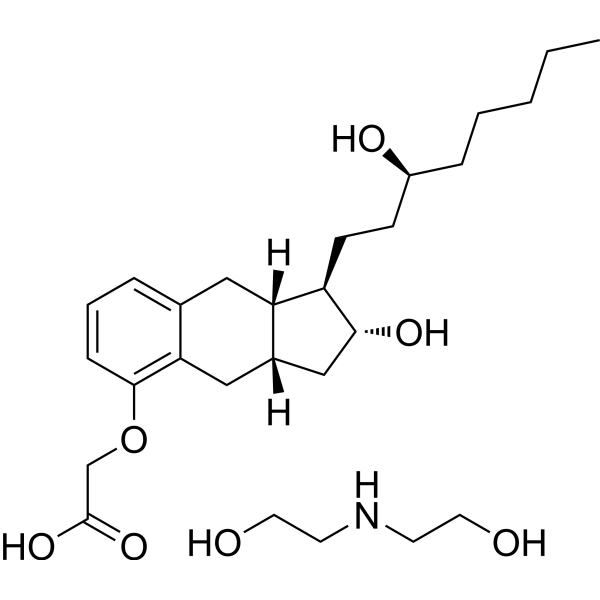
-
- HY-161248
-
|
|
Microtubule/Tubulin
|
Cancer
|
|
E7130 is a microtubule inhibitor, which ameliorates the tumor microenvironment through suppression of cancer-associated fibroblasts (CAF) and promotion of tumor vasculature remodeling .
|
-
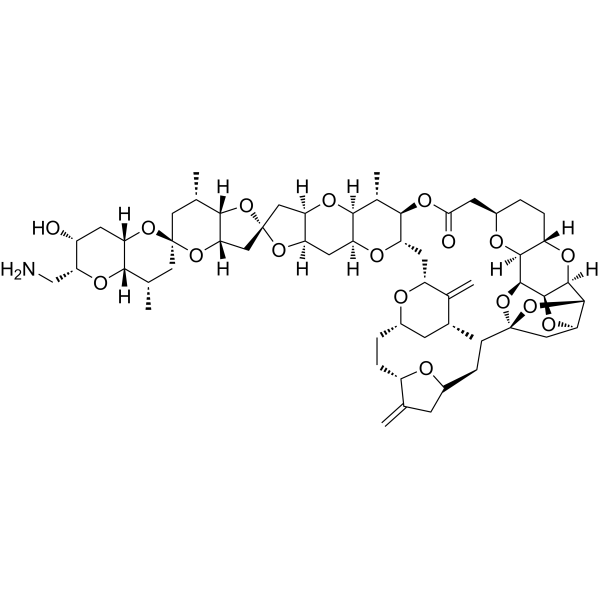
-
- HY-D0799A
-
|
|
Fluorescent Dye
|
|
|
Sulfo-NHS-LC-Biotin is an amine-reactive ester derivative of biotin and cannot pass the intact blood-retinal barrier. It can be used to assess vascular permeability of the brain and retinal vasculature.
|
-
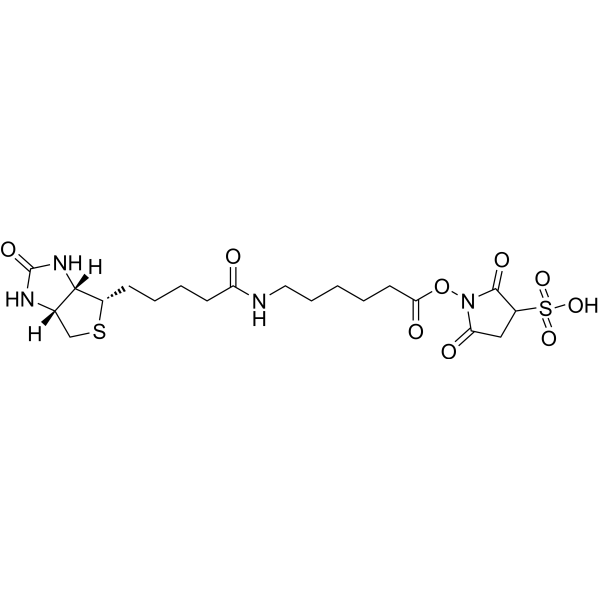
-
- HY-124756
-
SBI-425
1 Publications Verification
|
Phosphatase
|
Cardiovascular Disease
|
|
SBI-425 is an orally active and potent TNAP (tissue-nonspecific alkaline phosphatase) inhibitor (IC50=16 nM). SBI-425 inhibits TNAP in the vasculature, improving cardiovascular parameters and survival .
|
-

-
- HY-P4115
-
|
|
FABP
|
Cancer
|
|
CooP is a linear glioblastoma-targeting nonapeptide. CooP binds to the mammary-derived growth inhibitor/fatty acid binding protein 3 (FABP3) in the glioblastoma cells and its associated vasculature. CooP is used for the targeted delivery of chemotherapy and different nanoparticles .
|
-

-
- HY-W013215
-
|
cis-7,10,13,16-Docosatetraenoic acid
|
Endogenous Metabolite
|
Metabolic Disease
Inflammation/Immunology
|
|
Adrenic Acid (cis-7,10,13,16-Docosatetraenoic acid) is a naturally polyunsaturated fatty acid in the adrenal gland, brain, kidney, and vasculature. Adrenic Acid can regulate the vascular tone in arteries of the adrenal cortex. Adrenic Acid also is an inflammation enhancer in non-alcoholic fatty liver disease .
|
-

-
- HY-B0424
-
|
BAY-E-5009
|
Calcium Channel
Autophagy
|
Cardiovascular Disease
|
|
Nitrendipine (BAY-E-5009), an analogue of Nifedipine (HY-B0284), is a dihydropyridine calcium channel blocker with vasodilator action. Nitrendipine has antihypertensive effect .
|
-

-
- HY-P99655
-
|
KB004
|
Ephrin Receptor
Apoptosis
|
Cancer
|
|
Ifabotuzumab (KB004) is an IgG1κ antibody targeting EphA3 (KD=610 pM). Ifabotuzumab induces tumor cell apoptosis, activates Antibody-dependent cell mediated cytotoxicity (ADCC), and damages tumor vasculature. Ifabotuzumab reduces human idiopathic pulmonary fibrosis (IPF) CCR10 + cells and improves pulmonary fibrosis .
|
-

-
- HY-144786
-
|
|
Microtubule/Tubulin
Apoptosis
|
Cancer
|
|
Tubulin polymerization-IN-4 is a potent tubulin polymerization inhibitor with IC50 value of 4.6 μM. Tubulin polymerization-IN-4 can disrupt tubulin polymerization and vasculature, arrest the cell cycle at the G2/M phase, induce apoptosis, and suppress clonogenesis and migration in HeLa cells. Tubulin polymerization-IN-4 can be used for researching cervical cancer .
|
-
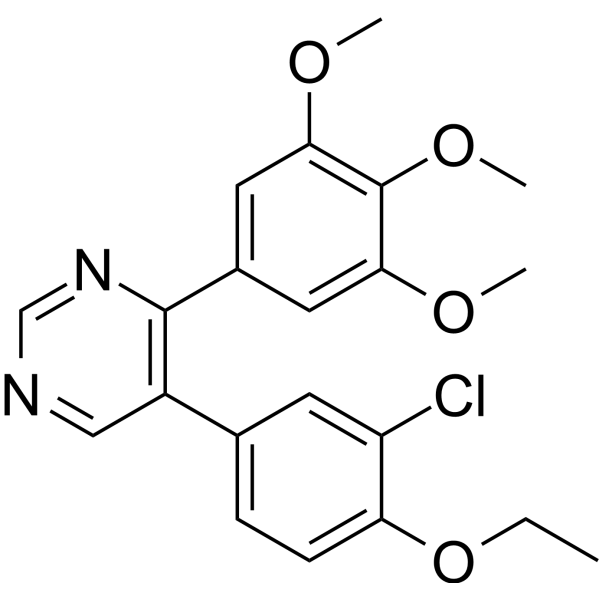
-
- HY-103211
-
|
|
Adrenergic Receptor
|
Cardiovascular Disease
Metabolic Disease
Cancer
|
|
L748337 is a potent β3-adrenergic receptor antagonist and displays selectivity over β1 and β2 receptors. The Ki values of L748337 for β3-, β2- and β1-adrenoceptors are 4.0 nM, 204 nM and 390 nM, respectively . L748337 couples predominantly to Gi to activate MAPK signaling and increases phosphorylation of Erk1/2 with pEC50 value of 11.6 . L748337 can be used for the research of cancer, nonalcoholic fatty liver disease (NAFLD), and cardiovascular related diseases .
|
-
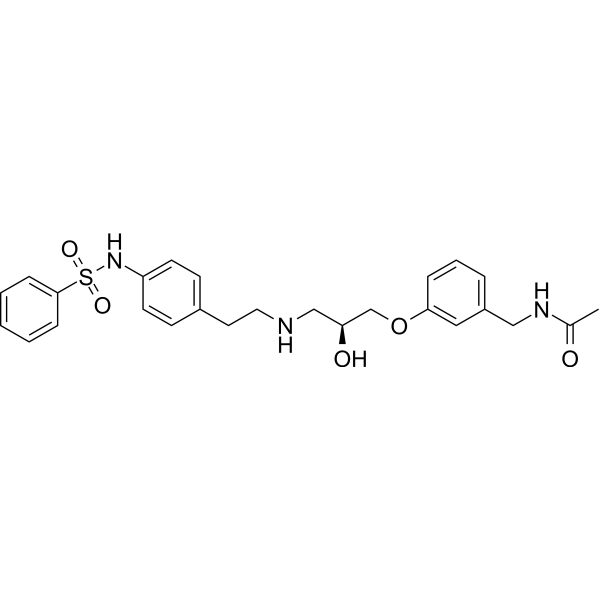
-
- HY-13016A
-
|
XL184 hydrochloride; BMS-907351 hydrochloride
|
VEGFR
c-Met/HGFR
c-Kit
TAM Receptor
FLT3
Apoptosis
|
Cancer
|
|
Cabozantinib hydrochloride is a potent and orally active inhibitor of VEGFR2 and MET, with IC50 values of 0.035 and 1.3 nM, respectively. Cabozantinib hydrochloride displays strong inhibition of KIT, RET, AXL, TIE2, and FLT3 (IC50=4.6, 5.2, 7, 14.3, and 11.3 nM, respectively). Cabozantinib hydrochloride shows antiangiogenic activity. Cabozantinib hydrochloride disrupts tumor vasculature and promotes tumor and endothelial cell apoptosis .
|
-
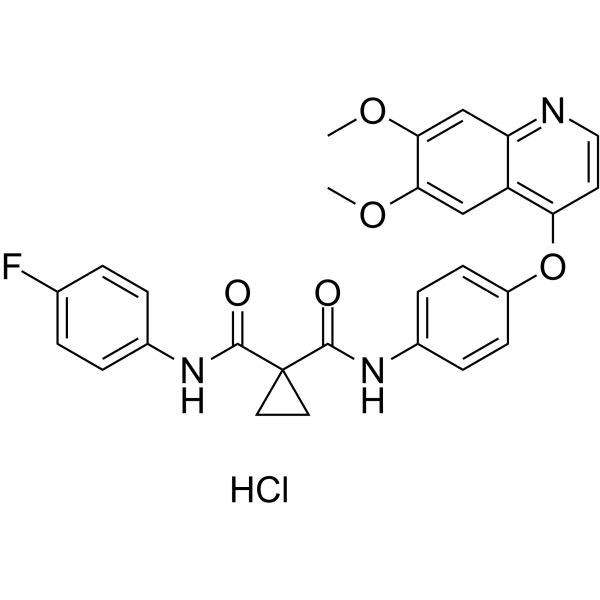
-
- HY-13016
-
Cabozantinib
Maximum Cited Publications
39 Publications Verification
XL184; BMS-907351
|
VEGFR
c-Met/HGFR
c-Kit
TAM Receptor
FLT3
Apoptosis
|
Cancer
|
|
Cabozantinib is a potent and orally active inhibitor of VEGFR2 and MET, with IC50 values of 0.035, and 1.3 nM, respectively. Cabozantinib displays strong inhibition of KIT, RET, AXL, TIE2, and FLT3 (IC50=4.6, 5.2, 7, 14.3, and 11.3 nM, respectively). Cabozantinib shows antiangiogenic activity. Cabozantinib disrupts tumor vasculature and promotes tumor and endothelial cell apoptosis .
|
-
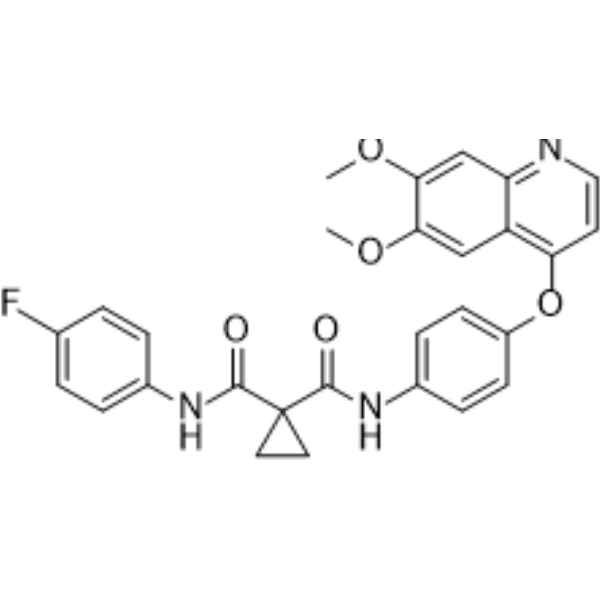
-
- HY-158218
-
|
Red Fluorescent GelMA
|
Biochemical Assay Reagents
|
Others
|
|
Red Fluorescent Gelatin Methacryloyl (Red Fluorescent GelMA) is methacryloyl gelatin (GelMA) with green fluorescence, which is obtained by "grafting" fluorescent molecules on GelMA. Red Fluorescent Gelatin Methacryloyl acts as a scaffold and can be used to engineer tissue analogs from the vasculature to cartilage and bone, allowing cells to proliferate and spread. Red Fluorescent Gelatin Methacryloyl is often used in cell culture, biological 3D printing, tissue engineering, etc .
|
-
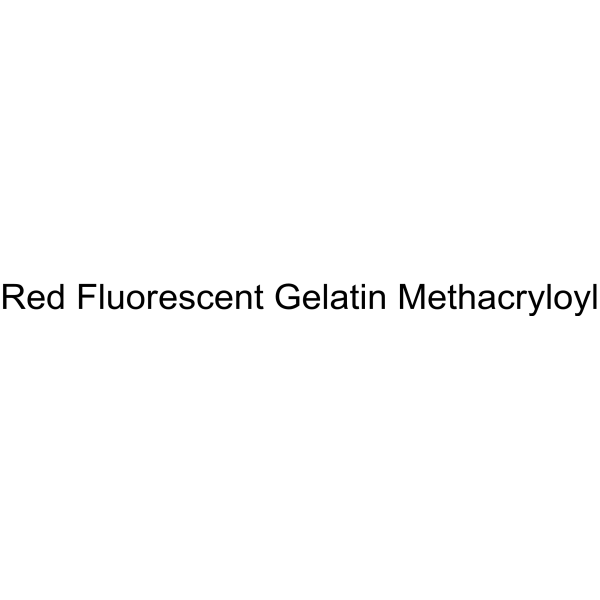
-
- HY-158219
-
|
Blue Fluorescent GelMA
|
Biochemical Assay Reagents
|
Others
|
|
Blue Fluorescent Gelatin Methacryloyl (Blue Fluorescent GelMA) is methacryloyl gelatin (GelMA) with green fluorescence, which is obtained by "grafting" fluorescent molecules on GelMA. Blue Fluorescent Gelatin Methacryloyl acts as a scaffold and can be used to engineer tissue analogs from the vasculature to cartilage and bone, allowing cells to proliferate and spread. Blue Fluorescent Gelatin Methacryloyl is often used in cell culture, biological 3D printing, tissue engineering, etc .
|
-

-
- HY-158217
-
|
Green Fluorescent GelMA
|
Biochemical Assay Reagents
|
Others
|
|
Green Fluorescent Gelatin Methacryloyl (Green Fluorescent GelMA) is methacryloyl gelatin (GelMA) with green fluorescence, which is obtained by "grafting" fluorescent molecules on GelMA. Green Fluorescent Gelatin Methacryloyl acts as a scaffold and can be used to engineer tissue analogs from the vasculature to cartilage and bone, allowing cells to proliferate and spread. Green Fluorescent Gelatin Methacryloyl is often used in cell culture, biological 3D printing, tissue engineering, etc .
|
-
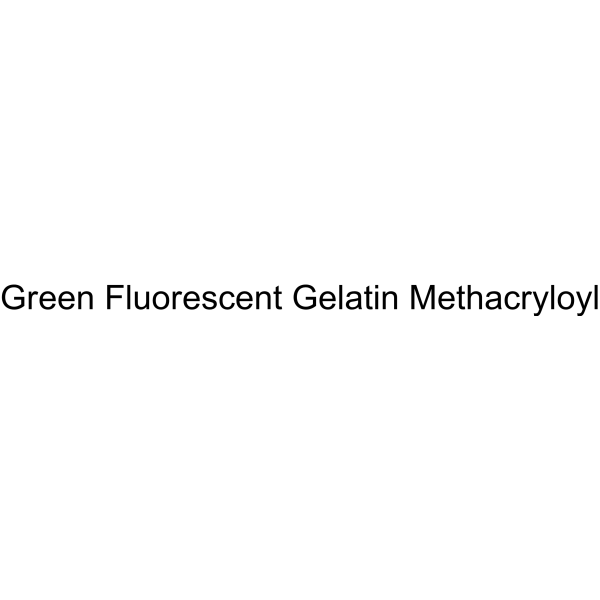
-
- HY-158082
-
|
Tetramethyl rhodamine isothiocyanate glucan, MW 4000
|
Fluorescent Dye
|
Others
|
|
TRITC-dextran MW 4000 (Tetramethyl rhodamine isothiocyanate glucan, MW 4000) is a fluorescent dye, with the molecular weight of 4 kD. TRITC-dextran MW 4000 exhibits an excitation wavelength of 555 nm. TRITC-dextran MW 4000 is vessel penetrate, which could label blood plasma to visualize the vasculature. TRITC-dextran MW 4000 is utilized in drug delivery for the stability of TRITC over a wide pH range (i.e. pH 2–11) and resistance to photo-bleaching .
|
-
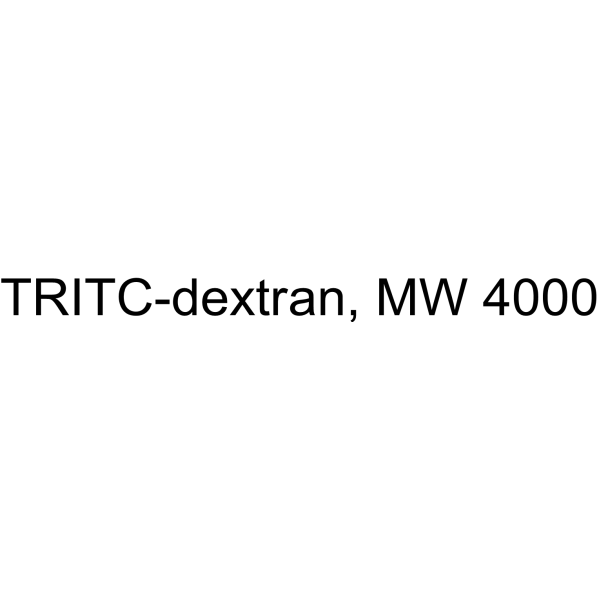
-
- HY-158082A
-
|
Tetramethyl rhodamine isothiocyanate glucan, MW 20000
|
Fluorescent Dye
|
Others
|
|
TRITC-dextran, MW 20000 (Tetramethyl rhodamine isothiocyanate glucan, MW 20000) is a fluorescent dye, with the molecular weight of 20 kD. TRITC-dextran MW 20000 exhibits an excitation wavelength of 555 nm. TRITC-dextran MW 20000 is vessel penetrate, which could label blood plasma to visualize the vasculature. TRITC-dextran MW 20000 is utilized in drug delivery for the stability of TRITC over a wide pH range (i.e. pH 2–11) and resistance to photo-bleaching .
|
-
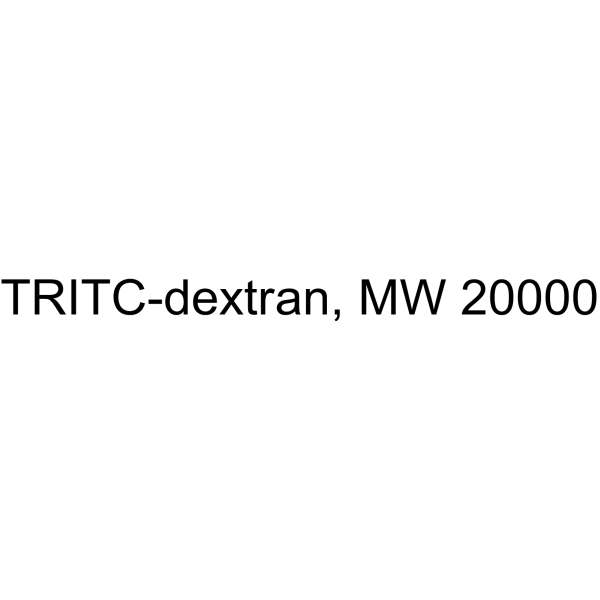
-
- HY-158082B
-
|
Tetramethyl rhodamine isothiocyanate glucan, MW 40000
|
Fluorescent Dye
|
Others
|
|
TRITC-dextran, MW 40000 (Tetramethyl rhodamine isothiocyanate glucan, MW 40000) is a fluorescent dye, with the molecular weight of 40 kD. TRITC-dextran MW 40000 exhibits an excitation wavelength of 555 nm. TRITC-dextran MW 40000 is vessel penetrate, which could label blood plasma to visualize the vasculature. TRITC-dextran MW 40000 is utilized in drug delivery for the stability of TRITC over a wide pH range (i.e. pH 2–11) and resistance to photo-bleaching .
|
-
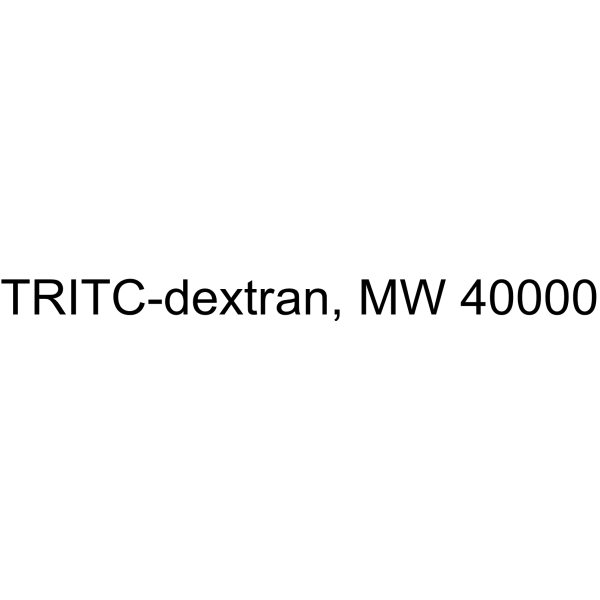
-
- HY-13016R
-
|
|
VEGFR
c-Met/HGFR
c-Kit
TAM Receptor
FLT3
Apoptosis
|
Cancer
|
|
Cabozantinib (Standard) is the analytical standard of Cabozantinib. This product is intended for research and analytical applications. Cabozantinib is a potent and orally active inhibitor of VEGFR2 and MET, with IC50 values of 0.035, and 1.3 nM, respectively. Cabozantinib displays strong inhibition of KIT, RET, AXL, TIE2, and FLT3 (IC50=4.6, 5.2, 7, 14.3, and 11.3 nM, respectively). Cabozantinib shows antiangiogenic activity. Cabozantinib disrupts tumor vasculature and promotes tumor and endothelial cell apoptosis .
|
-

-
- HY-119442
-
|
|
Leukotriene Receptor
|
Cardiovascular Disease
|
|
Quininib is a cysteinyl leukotriene 1 and 2 receptor antagonist with IC50s of 1.2 and 52 μM for CysLT1R and CysLT2R, respectively. Quininib is a potent inhibitor of developmental angiogenesis in the zebrafish eye. Quininib can be used for the research of ocular neovascular pathologies and may complement current anti-VEGF biological agents .
|
-
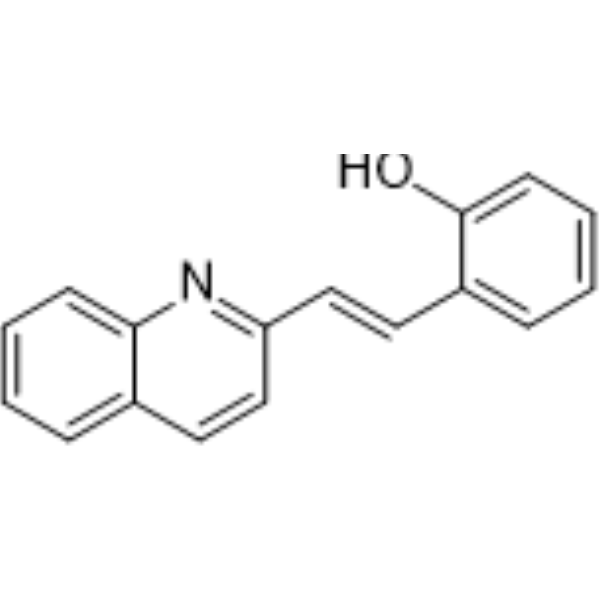
| Cat. No. |
Product Name |
Type |
-
- HY-D0799A
-
|
|
Dyes
|
|
Sulfo-NHS-LC-Biotin is an amine-reactive ester derivative of biotin and cannot pass the intact blood-retinal barrier. It can be used to assess vascular permeability of the brain and retinal vasculature.
|
| Cat. No. |
Product Name |
Type |
-
- HY-158218
-
|
Red Fluorescent GelMA
|
3D Bioprintig
|
|
Red Fluorescent Gelatin Methacryloyl (Red Fluorescent GelMA) is methacryloyl gelatin (GelMA) with green fluorescence, which is obtained by "grafting" fluorescent molecules on GelMA. Red Fluorescent Gelatin Methacryloyl acts as a scaffold and can be used to engineer tissue analogs from the vasculature to cartilage and bone, allowing cells to proliferate and spread. Red Fluorescent Gelatin Methacryloyl is often used in cell culture, biological 3D printing, tissue engineering, etc .
|
-
- HY-158219
-
|
Blue Fluorescent GelMA
|
3D Bioprintig
|
|
Blue Fluorescent Gelatin Methacryloyl (Blue Fluorescent GelMA) is methacryloyl gelatin (GelMA) with green fluorescence, which is obtained by "grafting" fluorescent molecules on GelMA. Blue Fluorescent Gelatin Methacryloyl acts as a scaffold and can be used to engineer tissue analogs from the vasculature to cartilage and bone, allowing cells to proliferate and spread. Blue Fluorescent Gelatin Methacryloyl is often used in cell culture, biological 3D printing, tissue engineering, etc .
|
-
- HY-158217
-
|
Green Fluorescent GelMA
|
3D Bioprintig
|
|
Green Fluorescent Gelatin Methacryloyl (Green Fluorescent GelMA) is methacryloyl gelatin (GelMA) with green fluorescence, which is obtained by "grafting" fluorescent molecules on GelMA. Green Fluorescent Gelatin Methacryloyl acts as a scaffold and can be used to engineer tissue analogs from the vasculature to cartilage and bone, allowing cells to proliferate and spread. Green Fluorescent Gelatin Methacryloyl is often used in cell culture, biological 3D printing, tissue engineering, etc .
|
-
- HY-158082
-
|
Tetramethyl rhodamine isothiocyanate glucan, MW 4000
|
Cell Assay Reagents
|
|
TRITC-dextran MW 4000 (Tetramethyl rhodamine isothiocyanate glucan, MW 4000) is a fluorescent dye, with the molecular weight of 4 kD. TRITC-dextran MW 4000 exhibits an excitation wavelength of 555 nm. TRITC-dextran MW 4000 is vessel penetrate, which could label blood plasma to visualize the vasculature. TRITC-dextran MW 4000 is utilized in drug delivery for the stability of TRITC over a wide pH range (i.e. pH 2–11) and resistance to photo-bleaching .
|
-
- HY-158082A
-
|
Tetramethyl rhodamine isothiocyanate glucan, MW 20000
|
Cell Assay Reagents
|
|
TRITC-dextran, MW 20000 (Tetramethyl rhodamine isothiocyanate glucan, MW 20000) is a fluorescent dye, with the molecular weight of 20 kD. TRITC-dextran MW 20000 exhibits an excitation wavelength of 555 nm. TRITC-dextran MW 20000 is vessel penetrate, which could label blood plasma to visualize the vasculature. TRITC-dextran MW 20000 is utilized in drug delivery for the stability of TRITC over a wide pH range (i.e. pH 2–11) and resistance to photo-bleaching .
|
-
- HY-158082B
-
|
Tetramethyl rhodamine isothiocyanate glucan, MW 40000
|
Cell Assay Reagents
|
|
TRITC-dextran, MW 40000 (Tetramethyl rhodamine isothiocyanate glucan, MW 40000) is a fluorescent dye, with the molecular weight of 40 kD. TRITC-dextran MW 40000 exhibits an excitation wavelength of 555 nm. TRITC-dextran MW 40000 is vessel penetrate, which could label blood plasma to visualize the vasculature. TRITC-dextran MW 40000 is utilized in drug delivery for the stability of TRITC over a wide pH range (i.e. pH 2–11) and resistance to photo-bleaching .
|
| Cat. No. |
Product Name |
Target |
Research Area |
-
- HY-P4115
-
|
|
FABP
|
Cancer
|
|
CooP is a linear glioblastoma-targeting nonapeptide. CooP binds to the mammary-derived growth inhibitor/fatty acid binding protein 3 (FABP3) in the glioblastoma cells and its associated vasculature. CooP is used for the targeted delivery of chemotherapy and different nanoparticles .
|
| Cat. No. |
Product Name |
Target |
Research Area |
-
- HY-P99279
-
|
Anti-Human Phosphatidylserine Recombinant Antibody
|
Inhibitory Antibodies
|
Cancer
|
|
Bavituximab (Anti-Human Phosphatidylserine Recombinant Antibody) is a phosphatidylserine (PS)-targeting monoclonal antibody, suppresses tumor growth by targeting tumor vasculature and reactivating antitumor immunity. Bavituximab plus Paclitaxel (HY-B0015) and Carboplatin (HY-17393), have enhanced inhibition on non-small-cell lung cancer .
|
-
- HY-P99655
-
|
KB004
|
Ephrin Receptor
Apoptosis
|
Cancer
|
|
Ifabotuzumab (KB004) is an IgG1κ antibody targeting EphA3 (KD=610 pM). Ifabotuzumab induces tumor cell apoptosis, activates Antibody-dependent cell mediated cytotoxicity (ADCC), and damages tumor vasculature. Ifabotuzumab reduces human idiopathic pulmonary fibrosis (IPF) CCR10 + cells and improves pulmonary fibrosis .
|
| Cat. No. |
Product Name |
Category |
Target |
Chemical Structure |
-
- HY-W013215
-
|
cis-7,10,13,16-Docosatetraenoic acid
|
Structural Classification
Classification of Application Fields
Ketones, Aldehydes, Acids
Source classification
Endogenous metabolite
Inflammation/Immunology
Disease Research Fields
|
Endogenous Metabolite
|
|
Adrenic Acid (cis-7,10,13,16-Docosatetraenoic acid) is a naturally polyunsaturated fatty acid in the adrenal gland, brain, kidney, and vasculature. Adrenic Acid can regulate the vascular tone in arteries of the adrenal cortex. Adrenic Acid also is an inflammation enhancer in non-alcoholic fatty liver disease .
|
-

Your information is safe with us. * Required Fields.
Inquiry Information
- Product Name:
- Cat. No.:
- Quantity:
- MCE Japan Authorized Agent:































